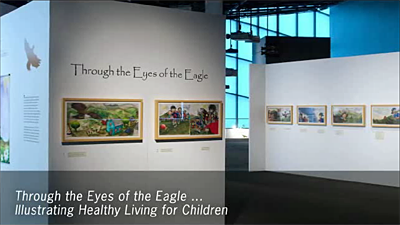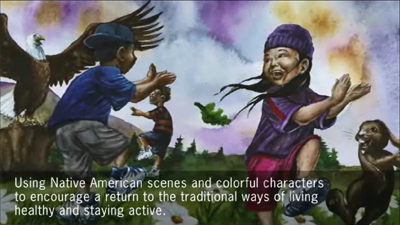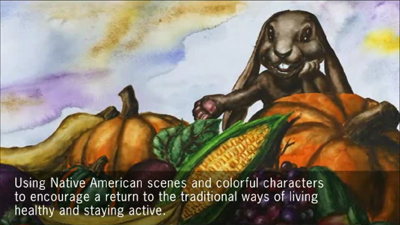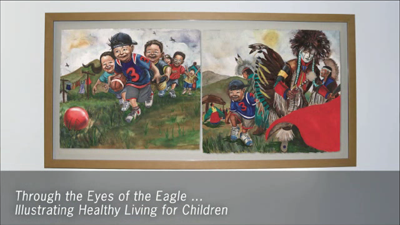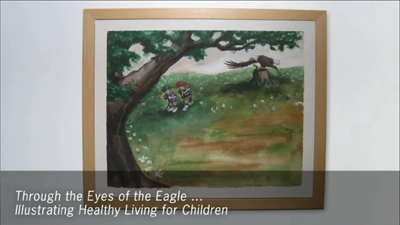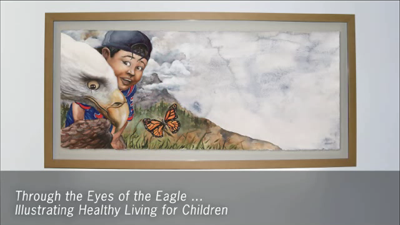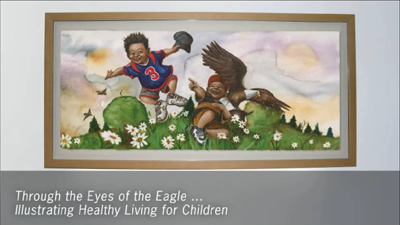CDC Traveling Exhibitions
Through the Eyes of the Eagle: Illustrating Healthy Living for Children Traveling Exhibit Overview
The Eagle Books exhibit featured the 65 original watercolors used in diabetes prevention stories for Native American children and all those interested in the road to healthy living. For thousands of years, Native Americans have told stories to pass on their history, knowledge, and culture to future generations. In the Eagle Books, a wise eagle is the tribal elder, who teaches traditional ways of health that children can remember and retell in their homes, schools, and communities.
The stories were written by Georgia Perez and illustrated by Patrick Rolo (Bad River Ban of Ojibwe, Wisconsin) and Lisa A. Fifield (Oneida Tribe, Wisconsin). The series was developed by the Centers for Disease Control and Prevention in collaboration with the Tribal Leaders Diabetes Committee and the Indian Health Service. The Eagle Books have been widely distributed in Native communities and across the United States with the help of many tribal leaders and organizations from all directions: north, south, east, and west. The messages of the elders reached a broader audience through the Eagle Books exhibit.
The exhibit of original artwork opened at the David J. Sencer CDC Museum at CDC's headquarters in Atlanta, Georgia in 2006. A national tour began in October 2008 at The National Museum of the American Indian in Washington, DC and at The George Gustav Heye Center in New York, both Smithsonian Institution Museums. From 2009-14, the exhbition was displayed from coast to coast at 15 venues in 10 states: AZ, CT, FL, IL, MA, NM, OH, OK, OR, and VA. The final stop was Chickasaw Cultural Center in Sulphur, OK.
- Page last reviewed: June 9, 2010
- Page last updated: June 9, 2010
- Content Source:
- Centers for Disease Control and Prevention
- Page maintained by: Office of the Associate Director for Communication, Division of Public Affairs


 ShareCompartir
ShareCompartir
